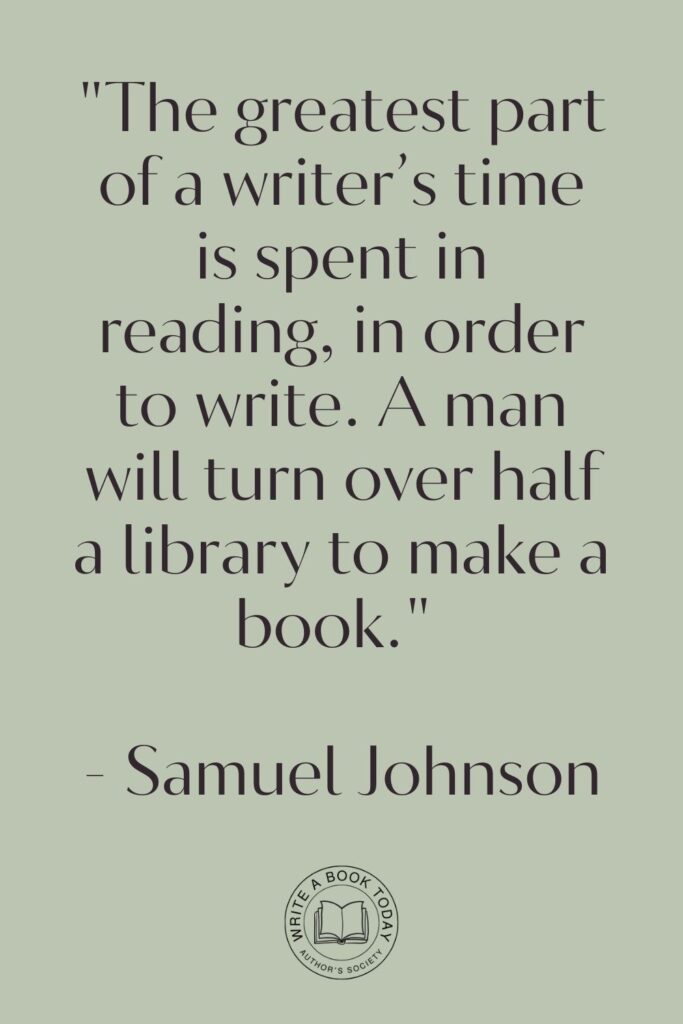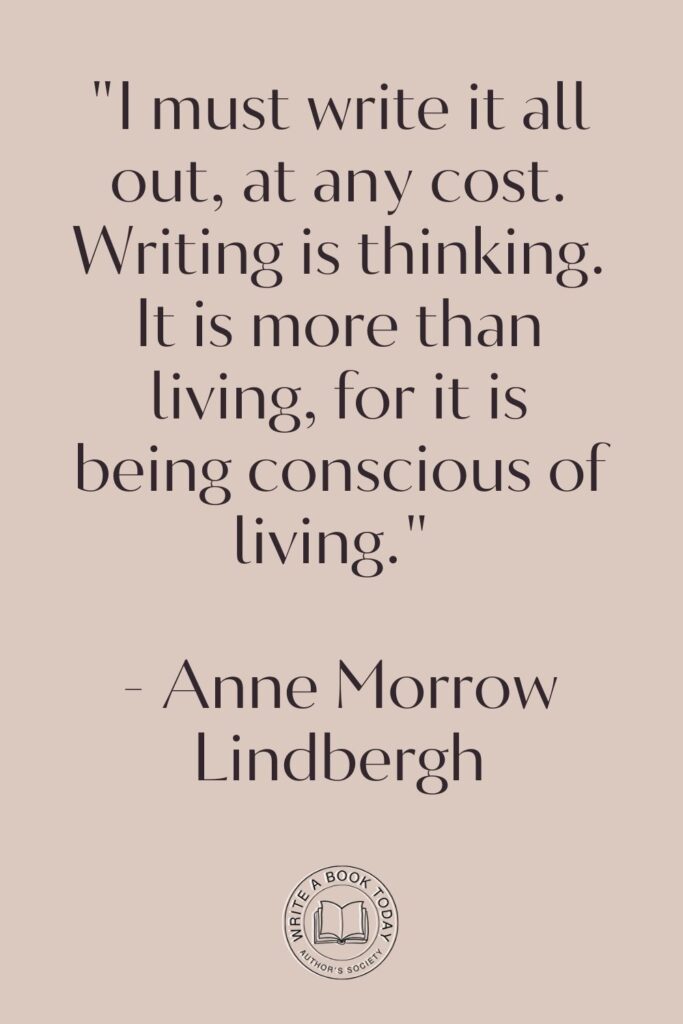Have you ever dreamed of seeing your name on the cover of a book? Perhaps the idea of becoming an author feels like a distant fantasy, reserved for the exceptionally talented or the lucky few.
But what if I told you that anyone, yes anyone, can embark on this exciting journey?
Like planting a seed in fertile soil, writing a book begins with nurturing your inner author and watching it grow into something beautiful and profound.
Let’s explore how to turn your dreams of writing a book into reality.
1. Embracing Your Inner Author
The journey to authorship begins by embracing your identity as a writer. It’s not just about putting pen to paper but recognizing the storyteller within you.
This is where your author journey takes root, flourishing as you cultivate passion and commitment.
1.1 Understanding the Author Identity
Every great author started somewhere, often with nothing more than a burning desire to tell a story. Understanding your identity as an author is about acknowledging that the ability to write lies within you, regardless of past experiences or perceived limitations.
It’s about recognizing the unique voice and perspective you bring to the table.
Embrace your individuality as a writer. Your experiences, thoughts, and emotions are your greatest assets. They shape your voice and make your story unique. Don’t shy away from them; instead, let them guide your narrative.

1.2 The Power of Passion and Commitment
Passion is the fuel that drives the engine of your writing journey. It’s what keeps you going when the words don’t flow as easily as you’d like.
Coupled with commitment, passion becomes an unstoppable force. Commitment is the promise you make to yourself to show up and write, even when it’s hard.
Consider the stories of authors like J.K. Rowling, who wrote the Harry Potter series while facing personal challenges. Her passion for storytelling, combined with unwavering commitment, transformed her ideas into a magical world beloved by millions.
Your story, too, can have that impact if you stay true to your passion and remain committed to your craft.
2. Getting Started with Writing
Once you’ve embraced your identity as a writer, it’s time to dive into the writing process. Starting can be daunting, but establishing a routine and overcoming initial fears can set you on the path to success.
2.1 Setting Up a Writing Routine
Creating a writing routine is like building a sturdy bridge over a turbulent river. It provides structure and stability, allowing you to cross from the idea phase to the completion of your manuscript.
Set aside dedicated time each day or week to write, and stick to it as you would any other important appointment.
- Choose a time of day when you’re most creative.
- Designate a quiet, comfortable space for writing.
- Set achievable daily or weekly word count goals.
- Use tools like timers or apps to stay focused and track progress.
Consistency is key to developing a writing habit. Even if you only write a few sentences some days, you’re still making progress. Celebrate small victories to keep your motivation high.
Google Docs is for notes. Scrivener is for novels. Upgrade your writing game and try it for free today!

2.2 Overcoming the Fear of the Blank Page
Staring at a blank page can be intimidating. It’s a common fear among aspiring authors, but it’s one that can be conquered.
Begin by writing anything – stream of consciousness, random thoughts, or character sketches. The act of writing will often spark new ideas and help overcome the initial block.
Remember, first drafts are meant to be imperfect. They are the raw clay from which you will sculpt your final masterpiece.
Allow yourself the freedom to make mistakes and explore different paths without judgment.

2.3 Writing Daily: Finding Your Flow
Writing daily, even if it’s just for a short period, helps you find your creative flow. It’s akin to warming up before a marathon. The more you write, the easier it becomes to enter that state where ideas and words come effortlessly.
Many successful authors swear by the practice of writing every day. Stephen King, for instance, writes 2,000 words daily, a habit that has contributed to his prolific career.
By writing consistently, you’ll not only improve your skills but also find joy in the process itself.
3. Crafting Your Story
With a writing routine established, it’s time to delve into the heart of your book: the story itself. Crafting a compelling narrative involves developing ideas, themes, characters, and plots that captivate readers.
3.1 Developing Your Idea and Theme
Every book begins with an idea, a spark of inspiration that ignites the storytelling flame. This idea should resonate with you deeply, as it will be your guiding light throughout the writing process.
Once you have your idea, consider the themes you want to explore. Themes add depth and meaning, connecting readers to the core message of your story.
To refine your idea, create a mind map. Start with your central concept and branch out with related themes, characters, and plot points.
This visual representation can help you see the bigger picture and identify potential areas to explore further.
3.2 Creating an Engaging Outline
An outline serves as the roadmap for your book. It provides a clear path from beginning to end, ensuring that you don’t get lost along the way.
Begin with a simple structure, breaking your story into three acts: setup, confrontation, and resolution. Within each act, outline key scenes and plot developments.
Flexibility is important when outlining. As you write, new ideas may emerge, leading you to revise your plan. Embrace these changes as part of the creative process, and allow your story to evolve naturally.

3.3 Building Compelling Characters and Plot
Characters are the lifeblood of your story. They are the vessels through which readers experience your world. Spend time developing multidimensional characters with distinct personalities, motivations, and arcs.
Consider their backgrounds, desires, and conflicts, as these elements will drive the plot forward.
The plot is the skeleton of your story, the sequence of events that shapes the narrative. A well-structured plot includes rising action, climax, and resolution, with twists and turns to keep readers engaged.
Remember, the best plots are those that arise naturally from the characters’ actions and decisions.
4. The Art of Revision
Writing a book is only half the battle. Revision is where your manuscript transforms from a rough draft into a polished work of art.
This phase requires patience, diligence, and a willingness to see your work with fresh eyes.
No marketing platform? No social following? No problem!
Publisher Rocket helps you market your debut novel like a pro.
It’s a gamechanger for debut authors – try it today!


4.1 Self-Editing Techniques
Begin the revision process by stepping back from your manuscript for a few days or weeks. This break allows you to return with a fresh perspective.
As you read through your work, look for inconsistencies, plot holes, and areas that need clarification. Pay attention to pacing, dialogue, and character development.
| Self-Editing Tips | Description |
| Read Aloud | Hearing your words can reveal awkward phrasing and unnatural dialogue. |
| Focus on Big Picture | Address major plot and character issues before fine-tuning language and style. |
| Take Breaks | Allow time between editing sessions to maintain objectivity. |

4.2 Seeking Feedback and Critiques
Feedback from others is invaluable in the revision process. Share your manuscript with trusted friends, writing groups, or beta readers who can provide constructive criticism.
Be open to their suggestions, but remember that you are the ultimate authority on your story.
Create a feedback checklist to guide your revisions. List specific questions or areas of concern you want readers to focus on. This approach ensures you receive targeted feedback that aligns with your goals.
4.3 The Importance of Patience in Editing
Editing is a marathon, not a sprint. It requires patience and perseverance. It’s easy to become discouraged when faced with multiple rounds of revisions, but remember that each pass brings you closer to your final vision.
Celebrate the progress you make, no matter how small, and trust in the process.
5. Navigating the Publishing Landscape
With your manuscript polished and ready, it’s time to explore publishing options. The path to publication can be as varied as the stories themselves, with traditional publishing and self-publishing each offering unique opportunities and challenges.
5.1 Traditional vs. Self-Publishing: Pros and Cons
Traditional publishing involves submitting your manuscript to literary agents and publishers, who handle editing, distribution, and marketing. This route can provide credibility and support but is often competitive and time-consuming.
Self-publishing, on the other hand, offers greater control and higher royalties. However, it requires authors to manage all aspects of production and marketing.
Both paths have their merits, so consider your goals and resources when choosing the best fit for you.
5.2 Finding the Right Literary Agent
If you choose the traditional route, finding a literary agent is a crucial step. Agents act as intermediaries between authors and publishers, advocating for your work and negotiating contracts.
Research agents who specialize in your genre and submit personalized query letters to pique their interest.

5.3 Marketing Your Book Effectively
Whether traditionally published or self-published, marketing is essential to reaching your audience. Build an author platform through social media, blogs, and email newsletters.
Engage with readers and fellow authors to create a supportive community.
Consider hosting book signings, virtual events, or blog tours to promote your work. Utilize online advertising and partnerships with book bloggers to increase visibility.
Remember, marketing is an ongoing effort that requires creativity and persistence.
6. Overcoming Common Writing Obstacles
The journey to become an author is not without its challenges. From self-doubt to distractions, overcoming obstacles is part of the process. By developing resilience and discipline, you can navigate these hurdles and stay on course.
6.1 Dealing with Self-Doubt and Imposter Syndrome
Self-doubt and imposter syndrome are common among writers, often fueled by comparisons to others. Remember that your voice is unique, and your story is worth telling. Embrace your journey and celebrate your achievements, no matter how small.
Create a positive affirmation to combat self-doubt. Repeat it to yourself whenever negative thoughts arise. Surround yourself with supportive peers who encourage and uplift you.
6.2 Managing Distractions and Staying Focused
Distractions can derail even the most dedicated writers. Create a distraction-free writing environment by setting boundaries with family and friends, turning off notifications, and using productivity tools.
Establish a routine that minimizes interruptions and maximizes focus.
Feeling lost with your debut novel?
Fiverr Pro connects you with expert editors, designers, and marketers – everything you need to get your book ready for success!

6.3 Cultivating Resilience and Discipline
Resilience and discipline are the backbone of a successful writing career. Set realistic goals, celebrate milestones, and learn from setbacks.
By cultivating these qualities, you’ll develop the perseverance needed to see your book through to completion.

7. Celebrating Your Journey as an Author
Writing a book is a monumental achievement, one that deserves celebration. As you reach the final stages of your journey, take time to acknowledge your progress, build a supportive community, and inspire others with your story.
7.1 Acknowledging Your Progress
Reflect on how far you’ve come since you first decided to write a book. Celebrate each milestone, from completing your first draft to holding your published book in your hands.
Recognize the hard work, dedication, and growth that brought you to this point.
7.2 Building a Supportive Writing Community
Writing can be a solitary endeavor, but it doesn’t have to be. Connect with fellow writers, join writing groups, and participate in workshops or conferences. A supportive community provides encouragement, feedback, and camaraderie on your author journey.
7.3 Inspiring Others with Your Story
Your journey to become an author can inspire others to pursue their own writing dreams. Share your experiences, challenges, and triumphs with aspiring authors.
By doing so, you contribute to a vibrant literary community and encourage others to embark on their own creative journeys.
So, dear writer, take that first step. Embrace your inner author, overcome obstacles, and let your story unfold. The world is waiting to hear your voice.
Yes, you can write a book, and the journey starts now.









I am a 65 year old Mother of Two wonderful children Married to my spouse 43 years old . also a grandmother of 5 grandchildren, I have a High School diploma , retired from a Grocery Chain Store worked at this Store for 30 years.
would like to write a book about (depression and Jealousy) How would I go about It . need information to create a book .
Hi Lucia, first of all thank you for reading our posts and supporting the site, it really means a lot.
Wow, you’ve got quite a life story and I’m sure your experiences would make a fantastic book. I think the first question you have to ask yourself is: Is this a fiction or non-fiction book. I think it might be non-fiction, but of course this is entirely up to you.
Then, I can highly recommend clicking through our site and reading our articles – we have well over 100 available with plenty of useful information, but they are about writing novels, which might not be entirely applicable to you.
Definitely make sure to read similar books out there, so browse on Goodreads, ask at your local library or books store and get inspiration.
Hope we could help at least a little bit and good luck on your author journey!